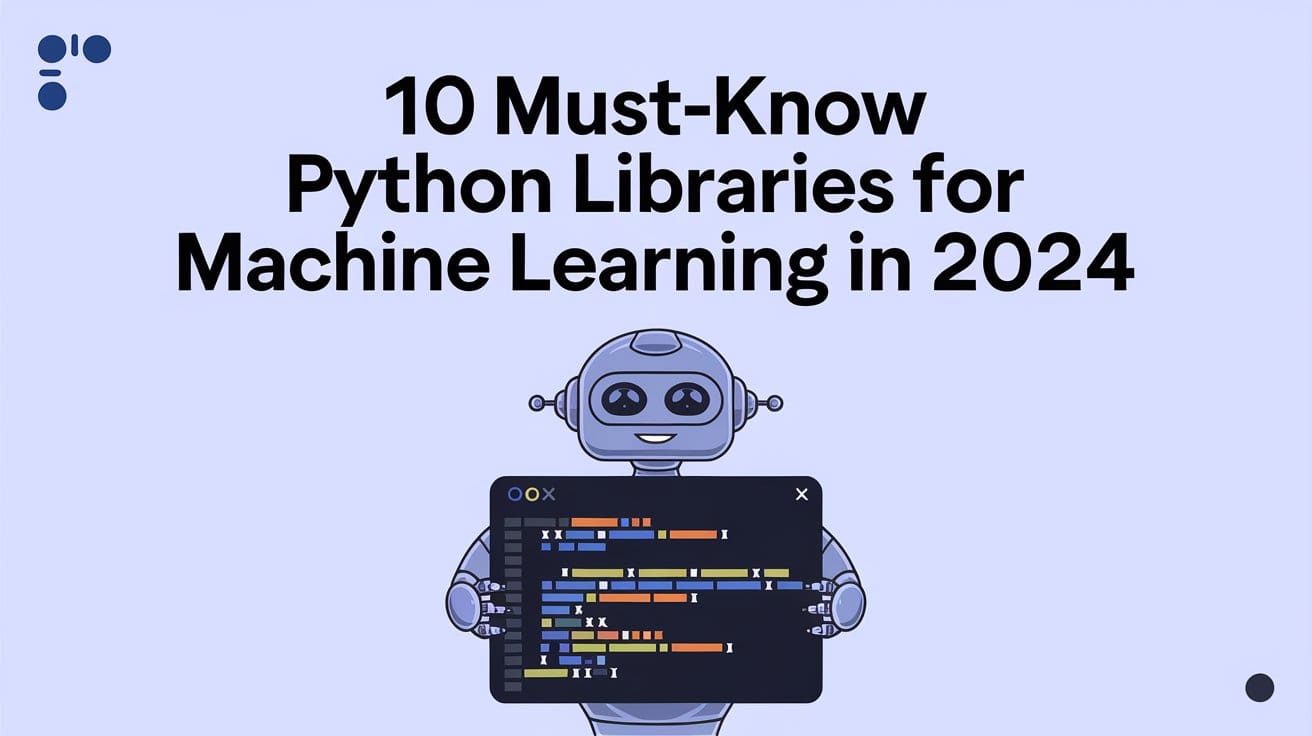

Image by Editor | Ideogram
As we progress through 2024, machine learning (ML) continues to evolve at a rapid pace. Python, with its rich ecosystem of libraries, remains at the forefront of ML development. In this post, we’ll explore the top 10 Python libraries dominating the ML scene in 2024, how the field has changed since 2020, and the key trends that have emerged.
Evolution from 2020 to 2024
2020: The Foundation Years
In 2020, established libraries like TensorFlow, PyTorch, and scikit-learn dominated the scene. Keras was often listed separately from TensorFlow, and libraries like XGBoost and LightGBM were present but not as widely adopted. Hugging Face Transformers was just beginning to gain traction, while JAX was still too new to make most top lists.
2021-2022: The Rise of Transformers and AutoML
This period saw the meteoric rise of transformer models in NLP, propelling Hugging Face Transformers to prominence. TensorFlow and PyTorch solidified their positions, with PyTorch gaining ground in research communities. JAX, FastAI, and PyCaret started appearing on more lists, reflecting growing interests in high-performance computing and automated machine learning.
2023-2024: Consolidation and Specialization
By 2024, major frameworks have consolidated their positions with rich ecosystems. We’ve seen increased focus on scalable and distributed computing, reflected in the prominence of libraries like Dask. High-level, automated ML libraries like PyCaret and FastAI have made machine learning more accessible, while specialized libraries for emerging areas have started to appear.
Key Trends
- Deep Learning Dominance: Increased focus on deep learning and transformer models.
- Scalability: Growing importance of scalable and distributed computing.
- Automation: Rise of high-level, automated ML libraries.
- Optimization: More attention to hyperparameter optimization and AutoML.
- Ecosystem Consolidation: Consolidation around major frameworks with growing ecosystems.
- Visualization: Continued importance of data visualization with a shift towards interactive tools.
The Top 10 Python Libraries for Machine Learning in 2024
Core ML and Deep Learning Frameworks
- TensorFlow: Google’s open-source library for deep learning and neural networks.
- PyTorch: Facebook’s flexible deep learning platform known for its dynamic computational graphs.
- scikit-learn: A versatile library for classical machine learning algorithms and data mining.
- Keras: High-level neural networks API, now integrated with TensorFlow.
Other Notable Libraries: XGBoost, LightGBM, JAX, FastAI, PyCaret
Data Manipulation and Numerical Computing
- NumPy: The fundamental package for scientific computing with Python.
- Pandas: Powerful data manipulation and analysis library.
Equally Important: SciPy, Dask
Visualization and Plotting
- Matplotlib: Comprehensive library for creating static, animated, and interactive visualizations.
Also Widely Used: Seaborn, Plotly
Natural Language Processing and Specialized Tools
- Hugging Face Transformers: State-of-the-art natural language processing models and tools.
- NLTK: Comprehensive suite of libraries and programs for symbolic and statistical natural language processing.
- spaCy: Industrial-strength natural language processing library.
Worth Mentioning: Optuna for hyperparameter optimization
Understanding the Ecosystem
- Core ML and Deep Learning Frameworks form the backbone of modern machine learning, providing tools to build and train a wide range of models from simple algorithms to complex neural networks.
- Data Manipulation and Numerical Computing libraries are essential for preparing and processing data, as well as performing the mathematical operations that underpin machine learning algorithms.
- Visualization and Plotting tools are vital for exploratory data analysis, understanding model performance, and communicating results effectively.
- Natural Language Processing and Specialized Tools cater to specific domains within machine learning, such as text processing, and provide utilities for optimizing model performance.
By becoming proficient with libraries across these categories, data scientists and machine learning engineers can build a comprehensive toolkit capable of tackling a wide range of machine learning challenges. While focusing on the top 10 libraries will cover most use cases, familiarizing yourself with the other mentioned libraries can provide you with specialized tools to enhance your ML capabilities further.
For data scientists at any skill level, this carefully selected array of libraries is designed to expand your machine learning toolkit and maintain your proficiency at the forefront of the industry. As we move forward, we can expect these trends to continue shaping the Python ML ecosystem, with a focus on making powerful ML techniques more accessible, improving performance and scalability, and adapting to new paradigms in AI research.



